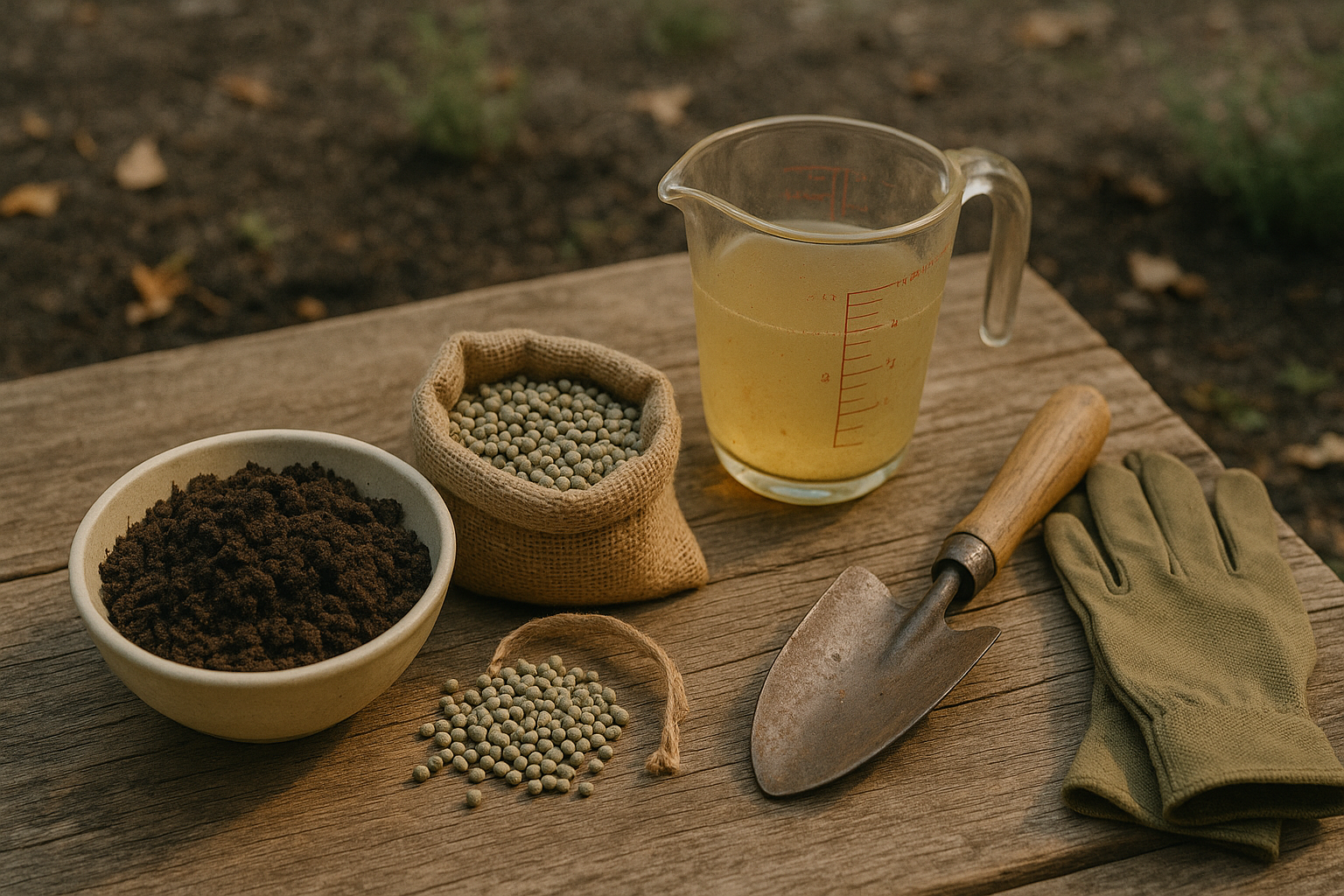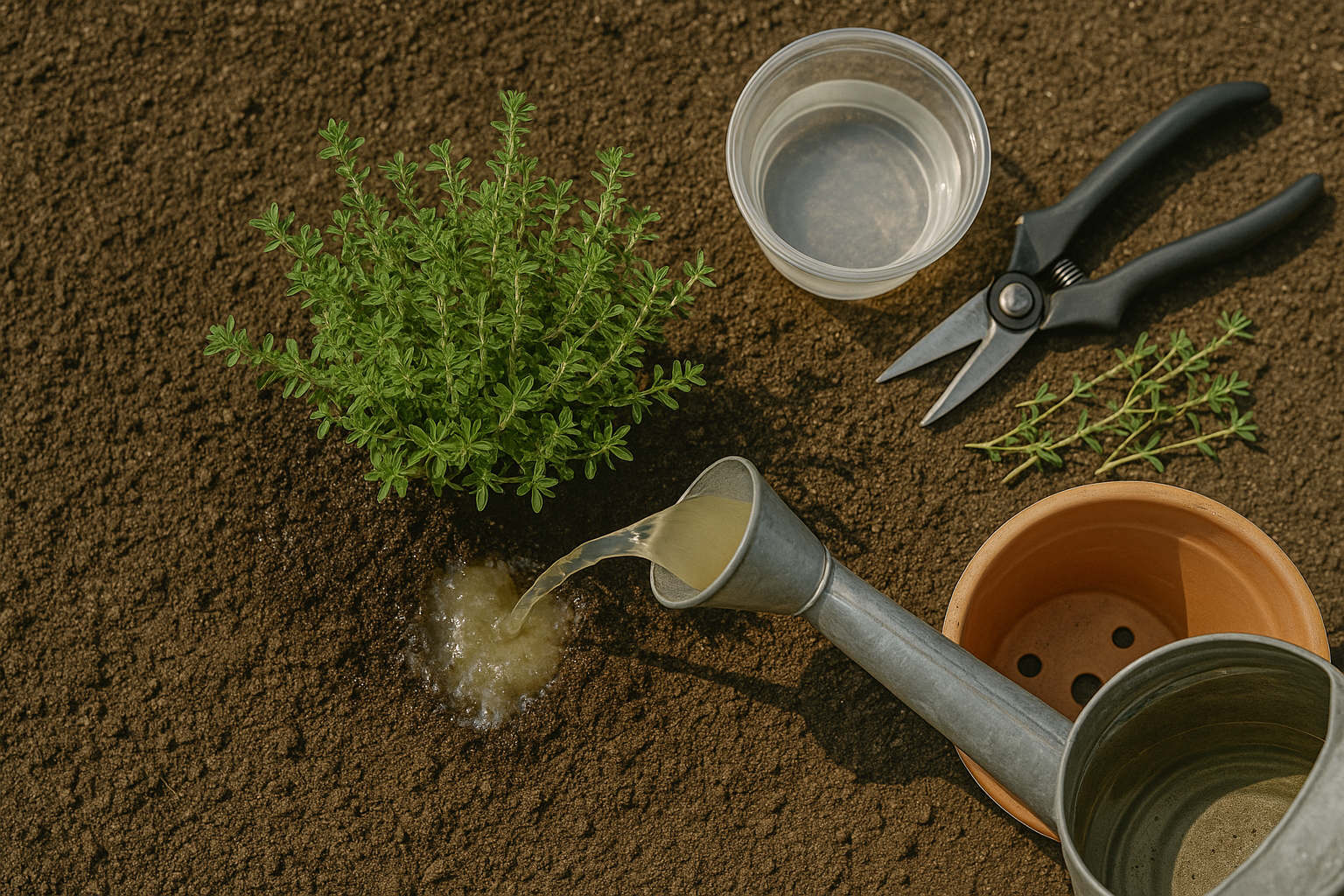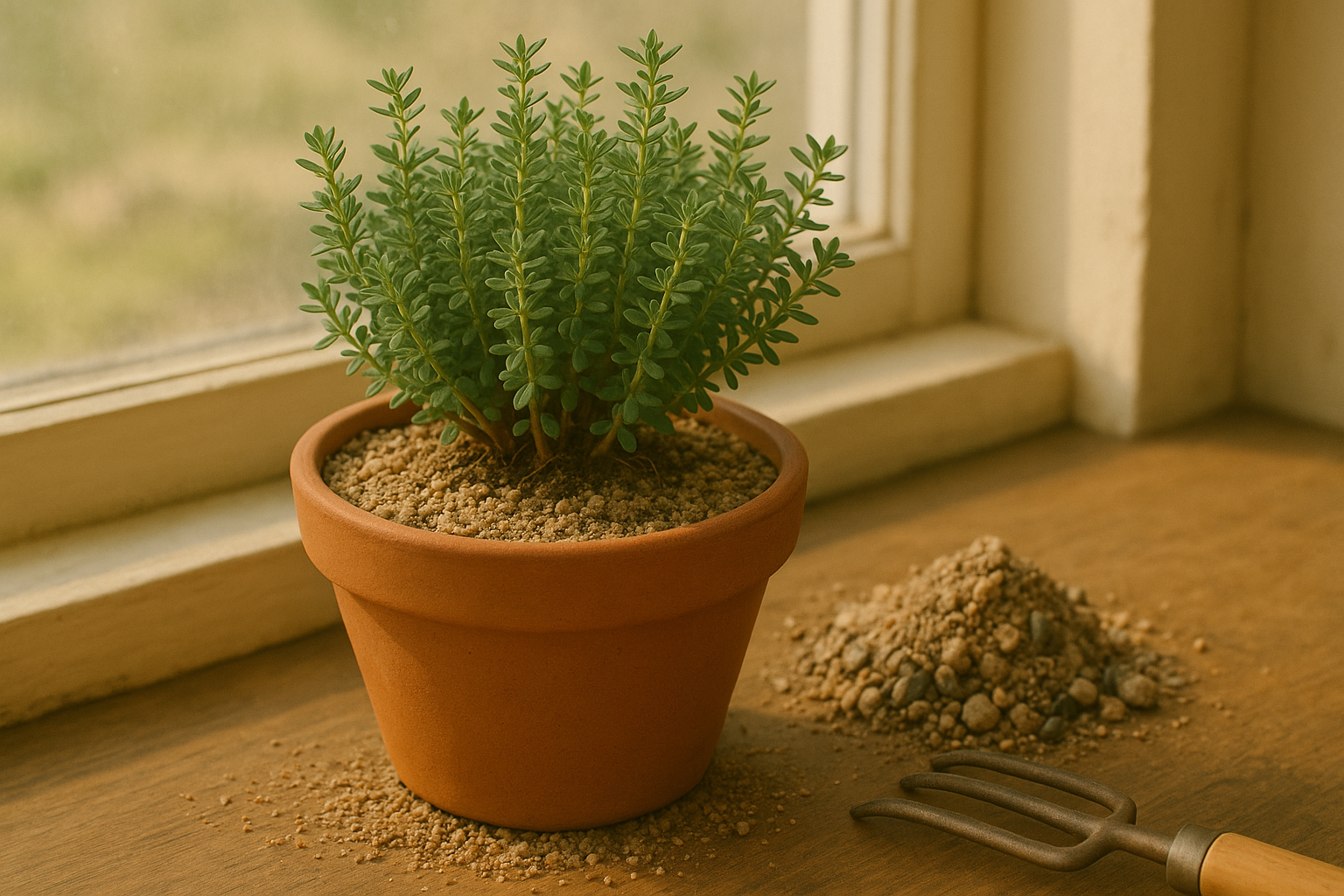Understanding Thyme’s Nutrient Needs
Thyme is known as a “light feeder” because it originates from the dry, rocky soils of the Mediterranean, where nutrients are naturally sparse and rain is infrequent. In these tough, resource-poor conditions, thyme evolved to thrive without much external input, developing deep roots and resilient foliage. This adaptation makes it quite different from hunger-prone garden herbs that crave more fertilizer.
When you grow thyme at home, try to mimic its native environment: well-draining soil, plenty of sunlight, and minimal feeding. Over-fertilizing thyme can cause problems—too much nitrogen leads to soft, lanky growth, making the plant more vulnerable to pests and diseases. Even worse, overfed thyme can lose its punchy aroma and flavor, as excess nutrients dilute the concentration of its essential oils.
For best results, avoid regular high-strength fertilizers; a light spring dressing of compost or a diluted, balanced fertilizer once a year is enough for most garden-grown thyme.
Look for signs of a healthy, well-nourished thyme plant:
- Compact, bushy growth
- Plentiful, aromatic leaves
- Sturdy stems that send up neat, upright branches
If your thyme looks lush but floppy, or its scent seems weak, it’s a sign nutrients may be a bit too rich—a cue to back off and let the plant’s natural resilience shine.
Choosing the Right Fertilizer for Thyme

When selecting a fertilizer for thyme, you’ll first want to weigh the pros and cons of organic versus synthetic options. Organic fertilizers, like compost or well-rotted manure, feed both the soil and the plant, building long-term soil health and fostering thriving beneficial microbes. These are generally safer for herbs like thyme, which thrives best with minimal fuss and prefers not to be overwhelmed by nutrients.
Synthetic fertilizers, on the other hand, provide nutrients quickly but can encourage rapid, leggy growth that compromises thyme’s signature flavor and compact form. For thyme, a balanced NPK (nitrogen-phosphorus-potassium) ratio like 4-4-4 or 5-5-5—delivered through a slow-release pellet or diluted liquid—gently supports foliage without promoting unwanted sprawl.
Look for products labeled “slow-release,” “organic,” or “herb-friendly.” Take a moment to read the label: the three numbers always list nitrogen first (N), then phosphorus (P), then potassium (K). Lower numbers often mean gentler, less frequent fertilizing—a good thing for thyme.
If you’re looking for the lowest-maintenance choice, top-dressing with homemade or store-bought compost once in spring provides steady, mild feeding. Whatever you choose, avoid high-nitrogen blends or fertilizers designed for lawns, which can overfeed thyme and dull its flavor.
In general, when in doubt, less is more; healthy thyme plants in decent soil need little intervention, and restraint almost always leads to healthier harvests.
When and How Often to Fertilize Thyme
For healthy, flavorful thyme, timing your fertilizer regimen is key. The best time to fertilize is in early spring, just as new growth begins, giving the plant a nutrient boost as it emerges from winter dormancy. A light feeding after pruning in mid-summer also helps thyme recover and produce fresh foliage, but avoid applying fertilizer in late fall or winter—this is when growth naturally slows, and fertilizing can actually harm the plant.
For potted thyme, a diluted liquid fertilizer once every six to eight weeks during active growth is ideal, as container soil nutrients deplete faster than in garden beds. In-ground thyme, especially in well-amended or rich soil, typically needs only a single spring application; over-fertilization can lead to lanky growth and diminished flavor.
If your thyme is thriving in garden beds with naturally fertile soil or has a lush, healthy look, you can often skip fertilizing altogether. Always hold off during dormancy or periods of stress—such as extreme heat or drought—when plants aren’t actively growing. By tailoring your fertilizer timing and frequency, you’ll support robust, aromatic thyme without encouraging excessive, weak growth.
Proper Fertilization Techniques
Applying fertilizer correctly is vital for healthy plants and avoiding damage like nutrient burn. Start by choosing the right type of fertilizer for your plant’s specific needs—read the label for instructions on dilution rates and application frequency. Never use fertilizer at full strength unless the product specifically says it’s safe; over-fertilization can quickly harm roots.
Prepare your solution by mixing the fertilizer with water, following the package’s dilution guidelines (often half-strength for young or delicate plants). Pour the diluted solution directly onto the soil near the root zone, not on the leaves or stems—liquid fertilizer on foliage can lead to burns or fungal problems.
After feeding your plant, water the soil lightly to help the nutrients disperse evenly and reach the roots, but avoid waterlogging, as excess water can wash nutrients away and suffocate roots. Monitor your plant’s reaction in the days following fertilization by looking for signs like yellowing leaves (possible overfeeding), improved growth, or darker foliage (signs of proper nutrition).
Hold back on additional feeding until you’re sure your plant is responding well, and never exceed recommended intervals. Keeping an eye on your plants, using proper dilution, and watering after fertilizing are key to nurturing robust, healthy growth while preventing any accidental damage.
Spotting and Fixing Over-Fertilization in Thyme

Over-fertilization in thyme is a common issue that can dull its aromatic charm and harm its overall health. If you notice your thyme plant’s leaves turning yellow or brown—especially at the tips—or if the stems look soft, floppy, and weak instead of firm and upright, these are classic signs of overfeeding.
Other symptoms may include slowed or erratic growth, burnt-looking leaf edges, and a crusty residue forming on the soil surface—often caused by fertilizer salts.
To quickly fix over-fertilization, start by gently flushing the soil with plenty of clean water to wash away excess nutrients. Make sure the plant’s pot has good drainage to prevent soggy roots, which can worsen the problem. Hold off on any more fertilizer feedings until your thyme has clearly recovered.
Snip away any yellowed or badly affected leaves and stems to encourage fresh, healthy growth.
Preventing Over-Fertilization
To avoid future issues, use diluted, organic fertilizers sparingly—thyme thrives on minimal feeding. Always check the packaging and stick to recommended application rates, fertilizing only during active growth periods in spring and early summer.
Remember, with thyme, less is almost always more. Healthy, robust plants usually mean you’re already doing just enough.
Keys to Long-Term Thyme Health Beyond Fertilizer
For thriving thyme that endures season after season, there’s more to success than just feeding your plants. Focus on creating an environment that mimics thyme’s Mediterranean roots.
Prioritize sunlight—thyme craves at least six hours of direct light daily, so pick the sunniest spot in your garden or on your windowsill. Water sparingly, allowing the soil to fully dry between sessions; thyme is drought-tolerant and dislikes soggy roots, so err on the side of underwatering.
When it comes to pruning, don’t be shy—regularly snip back stems after flowering to encourage fresh, bushy growth and keep the plant from getting woody.
Pay special attention to your soil: well-draining, gritty earth with plenty of organic matter is key. If your soil is heavy or clay-like, mix in sand or gravel for extra drainage, and augment with compost rather than relying on commercial fertilizers. Too much feeding can actually weaken thyme, making it lush but less flavorful and more prone to disease.
Ultimately, resist the urge to micromanage; thyme thrives on a minimalist approach—think tough love. With ample light, gritty soil, and occasional trimming, your thyme will stay healthy, aromatic, and productive for years to come, delivering that classic Mediterranean resilience right to your doorstep.
